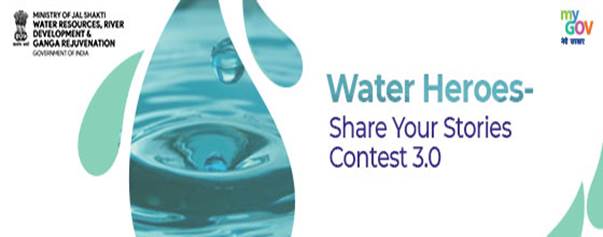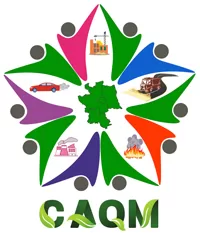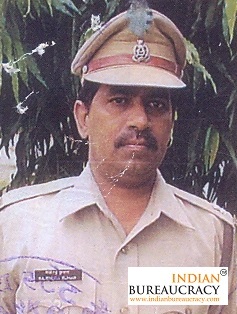
The Master Plan for Artificial Recharge to Ground Water – 2020 has been prepared by Central Ground Water Board (CGWB) jointly with State Governments including the Government of NCT, Delhi. The master plan is a macro plan, formulated to work out the feasibility of various structures for the different terrain conditions of the country and respective estimated costs, providing a broad outline of the project and expected investments.
The Master Plan inter-alia is meant to manage storm water flows in Delhi. As per the Master Plan, in Delhi, out of 175 Million Cubic Meters of estimated rainfall runoff including storm water, 24 MCM can be utilized for artificial recharge to ground water. To utilise the surplus runoff, 12 nos. of Check Dams, 22,706 nos. of Recharge Shaft/Recharge Trench and 3,04,500 nos. of Roof Top rain water harvesting structures were envisaged. The Implementation has to be done through existing schemes of State Governments and no separate scheme/fund has been envisaged for implementation by Central Government.
CGWB has carried out various demonstrative artificial recharge projects in Delhi under Central Sector Scheme during VIII & IX Plan period. The details are as follows-
-
- In JNU and IIT comprising 5 microsheds, 0.46 MCM storm water was utilized for recharge to ground water through the construction of four check dams with a storage capacity of 49,000 cubic meters. The impact of upto 4 m rise in water level in the area has been observed.
- The Kushak Nala, Delhi has a catchment of 3.5 sq. km. and about 1,42,000 Cubic meters of unutilized runoff from the Nala has been utilized to recharge the ground water through two gabion bunds and 2 Nala bunds which resulted in 20cm rise in water level in the area.
- The Lodhi Garden, Delhi spreads over an area of 36 ha and about 25,000cubic meters of water from the garden and its adjoining area during precipitation have been utilized for recharge through the construction of three lateral shafts and three recharge pits. Due to this rise in ground water level of about 35 cm in the area has been observed.
CGWB also monitors ground water quality in the vicinity of major drains in Delhi. The ground water quality data so generated is attached at Annexure.
As informed by Delhi Jal Board, at present 81% of the Delhi is covered under Sewerage system. In the remaining 19% of the area including 1799 unauthorised colonies, network is being extended in a phased manner.
It is possible that in unsewerd areas, sewage would be entering the storm water drains. The steps taken for providing sewer network in 1799 unauthorised colonies is as under:-
- Sewer network has been extended to 725 unauthorized colonies.
- Works are in progress for laying sewer network in 572 unauthorized colonies.
- Works of laying sewer network in 341 unauthorized colonies are being taken up in phased manner depending on availability of land for construction of Sewage Treatment Plants and Sewage Pumping Stations from land owning agencies i.e DDA and Revenue Department, Govt. of Delhi. Matter is being followed up with land owning agencies for early allotment of land parcels.
- There are 161 unauthorized colonies where NOC is awaited as these fall under
O-zone/under forest area/ ASI area etc.
All the natural drains needs to be kept obstruction free. Ideally, the storm water should flow through its designed natural drainage system. Accordingly, NGT and NMCG has issued directions to keep some drains like Subhash Nagar etc. uncovered, to avoid encroachments on it and to ensure its regular cleaning.
This information was given by the Minister of State for Jal Shakti, Shri Prahlad Singh Patel in a written reply in Lok Sabha today.
***
AS
| Ground Water Quality 2021 | ||||||||||||||||||
| S.No. | Drain Name | Location of the PZ | Source | pH | ECin µS/cm at 250 C | CO3 | HCO3 | Cl | SO4 | NO3 | F | PO4 | Ca | Mg | Na | K | SiO2 | TH as CaCO3 |
| mg/l | mg/l | mg/l | mg/l | mg/l | mg/l | mg/l | mg/l | mg/l | mg/l | mg/l | mg/l | mg/l | ||||||
| 1 | Barapulla Drain | Sunder Nursery | TW | 8.68 | 619 | 28 | 327 | 35 | 5 | 9.9 | 0.45 | <0.01 | 12 | 29 | 105 | 2.8 | 19 | 150 |
| 2 | Najafgarh Drain | Majnu ka Tila | DW | 8.05 | 2554 | 0 | 256 | 542 | 238 | 115.56 | 0.51 | <0.01 | 80 | 71 | 310 | 120 | 19 | 490 |
| 3 | Drain No.8 | Bhalaswa Lake | HP | 7.87 | 4744 | 0 | 171 | 1334 | 361 | 1.6 | 0.71 | <0.01 | 224 | 168 | 561 | 11 | 21 | 1251 |
| 4 | Najafgarh Drain | Najafgarh | TW | 8.24 | 269 | 0 | 99 | 27 | 62 | 3.3 | 0.44 | <0.01 | 32 | 15 | 8.87 | 3.7 | 17 | 140 |
| 5 | Shahdara Drain | Gazipur Crossing | TW | 8.43 | 704 | 28 | 212 | 124 | 18 | 6.6 | 0.42 | <0.01 | 28 | 34 | 95 | 8.8 | 15 | 210 |
| 6 | Drain No.8 | Sanjay Gandhi Transport Nagar Pz | Pz | 7.42 | 12780 | 0 | 312 | 3800 | 870 | 0.2 | 0.44 | <0.01 | 629 | 314 | 1700 | 17 | 22 | 2812 |
ANNEXURE
REGARDING “STORM WATER MANAGEMENT IN DELHI”.
| Ground Water Quality (Heavy metals), 2021 | |||||||||||||||
| S.No. | Drain Name | Location of the PZ | Source | Chromium | Manganese | Iron | Nickel | Copper | Zink | Arsenic | Selenium | Silver | Cadmium | Lead | Uranium |
| Parts per million (ppm) | Parts per billion (ppb) | ||||||||||||||
| 1 | Najafgarh Drain | Majnu ka Tila | DW | 0.003 | 0.055 | 0.029 | 0.005 | 0.002 | 0.009 | 0.641 | 0.239 | BDL | 0.042 | BDL | 9.599 |
| 2 | Barapulla Drain | Sunder Nursery | TW | BDL | 0.061 | 0.028 | BDL | BDL | 0.019 | 0.243 | 0.083 | BDL | 0.067 | BDL | 10.900 |
| 3 | Drain No.8 | Bhalaswa Lake | HP | BDL | 0.252 | 3.392 | BDL | BDL | 1.575 | 0.134 | 0.085 | BDL | 0.035 | BDL | 4.543 |
| 4 | Najafgarh Drain | Najafgarh | TW | BDL | 0.006 | 0.020 | BDL | BDL | 0.260 | 1.179 | 0.034 | BDL | 0.106 | BDL | 1.690 |
| 5 | Shahdara Drain | Gazipur Crossing | TW | BDL | 0.074 | 0.016 | BDL | BDL | 0.290 | 0.387 | 0.012 | BDL | 0.081 | 0.227 | 7.209 |







Leave a Reply
You must be logged in to post a comment.